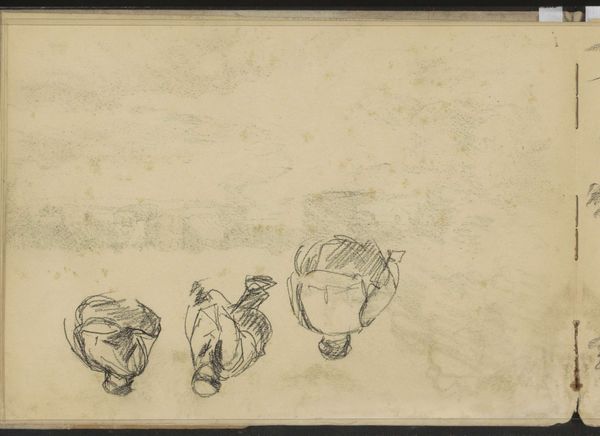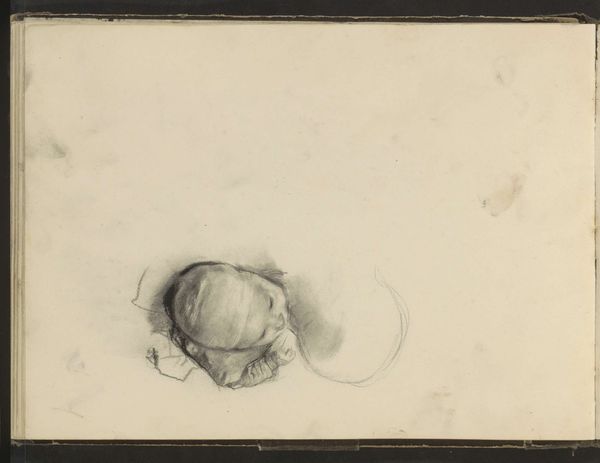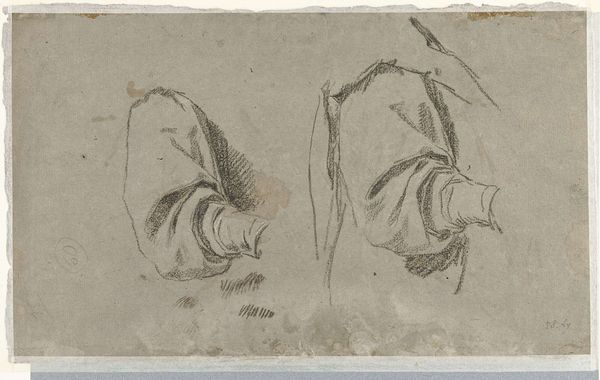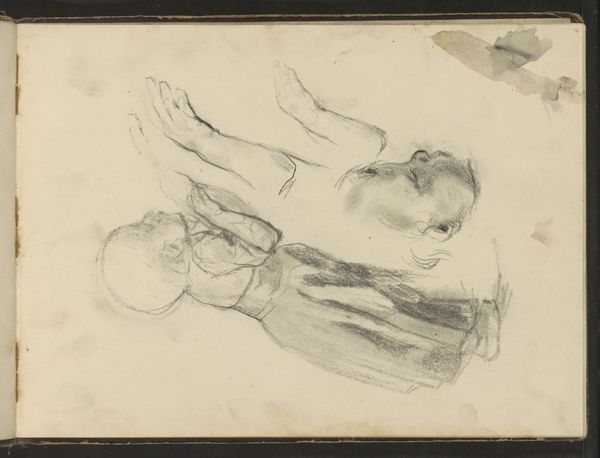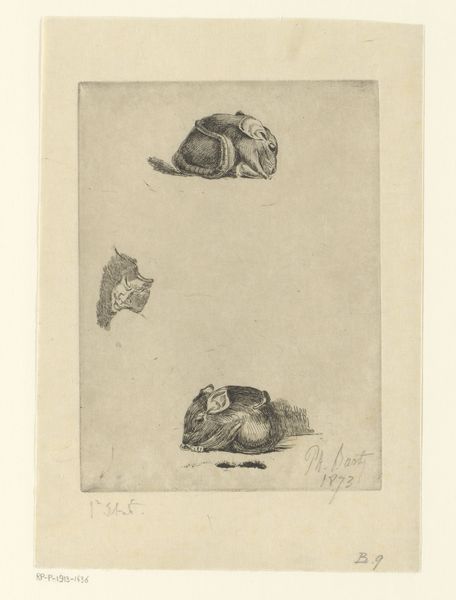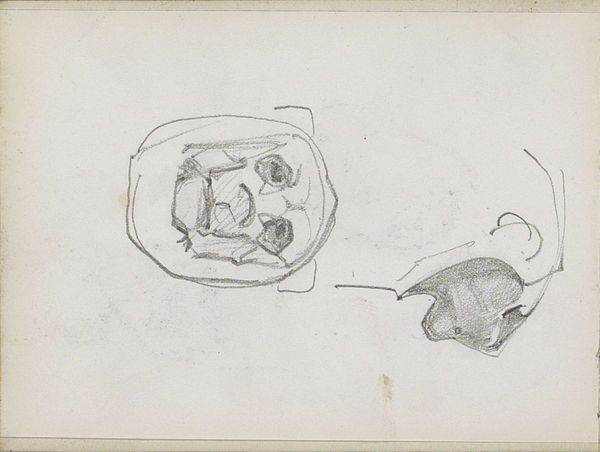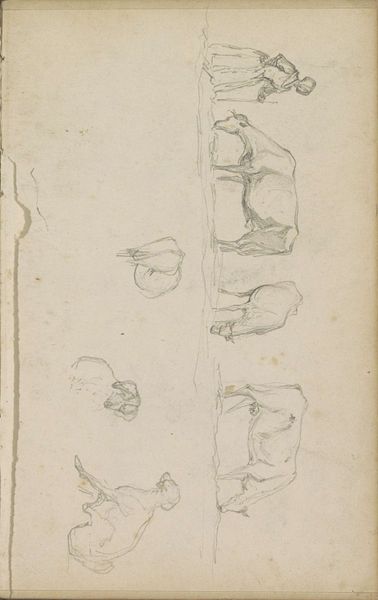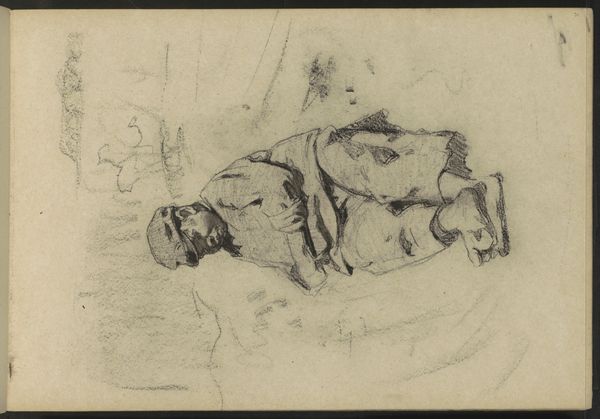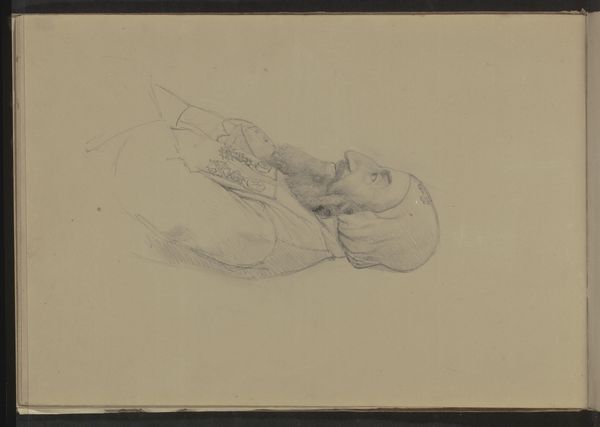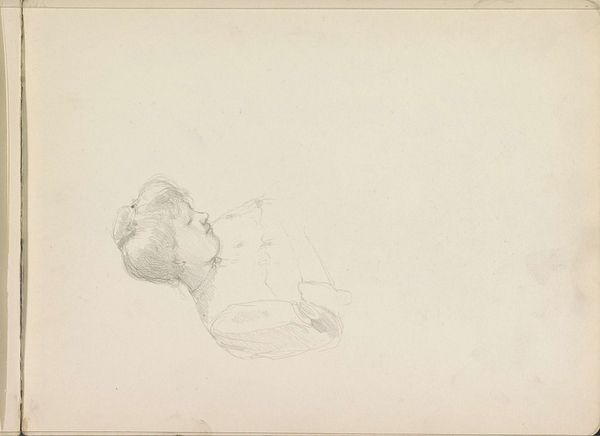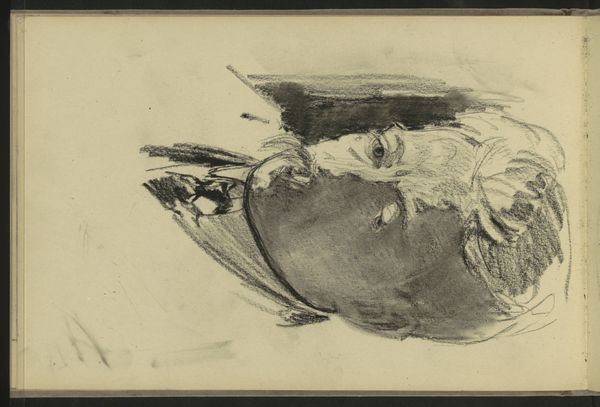
drawing, pencil
#
portrait
#
drawing
#
pencil
#
realism
Copyright: Rijks Museum: Open Domain
Curator: Welcome. We're looking at "Babykoppen," by Albert Neuhuys, likely created sometime between 1854 and 1914. The piece resides here at the Rijksmuseum. It's a pencil drawing, showcasing two studies of infant heads. Editor: My first thought is one of stark simplicity. The contrast between the stark white page and the delicate shading really brings a tenderness to the sketch. Curator: Indeed. Let's consider the composition. The artist has arranged the heads somewhat asymmetrically on the page. One is carefully cradled in a hand, while the other appears almost… swaddled. What semiotic significance might that contrast hold? Editor: To me, it immediately speaks to the labor and materiality of childcare. The swaddled infant reminds me of traditional practices, a simple solution provided to mothers constrained by limited means. Meanwhile, the child in the hand shows human labor, the care demanded even for the most basic resources like safety or feeding. Curator: An interesting consideration of available tools and their connection to parental practice. Focusing on purely formal aspects, the handling of light and shadow in each study is markedly different. The swaddled head is rendered with a softer, more diffuse light, while the head in the hand has sharper, more defined contours. Editor: That sharper definition also emphasizes the texture—the delicate skin against the coarser texture of the hand. The pencil itself is a tool, of course, and its marks reveal Neuhuys's skill. Did he grind his own graphite, perhaps, controlling the very pigment he employed to depict these vulnerable infants? That connection to production—from the earth to the art—frames the subject within its era. Curator: That’s insightful. To broaden the context, we know Neuhuys painted realist scenes of Dutch peasant life. Could these studies, despite their intimate scale, connect to broader social concerns? Editor: Certainly. Child rearing is fundamental to culture; reflecting a world wherein children are either treasures to be protected or additional hands whose lives can start labor as early as they can handle work. This connects intimately with Neuhuys's themes, suggesting this study engages with the means of reproduction as social class. Curator: It adds layers to these subtle works. The careful construction invites deeper meditation on artistic intent. Editor: Absolutely, an engagement in method and class. It encourages questions about childhood as labor and subject within both intimate families and broader societal systems.
Comments
No comments
Be the first to comment and join the conversation on the ultimate creative platform.
